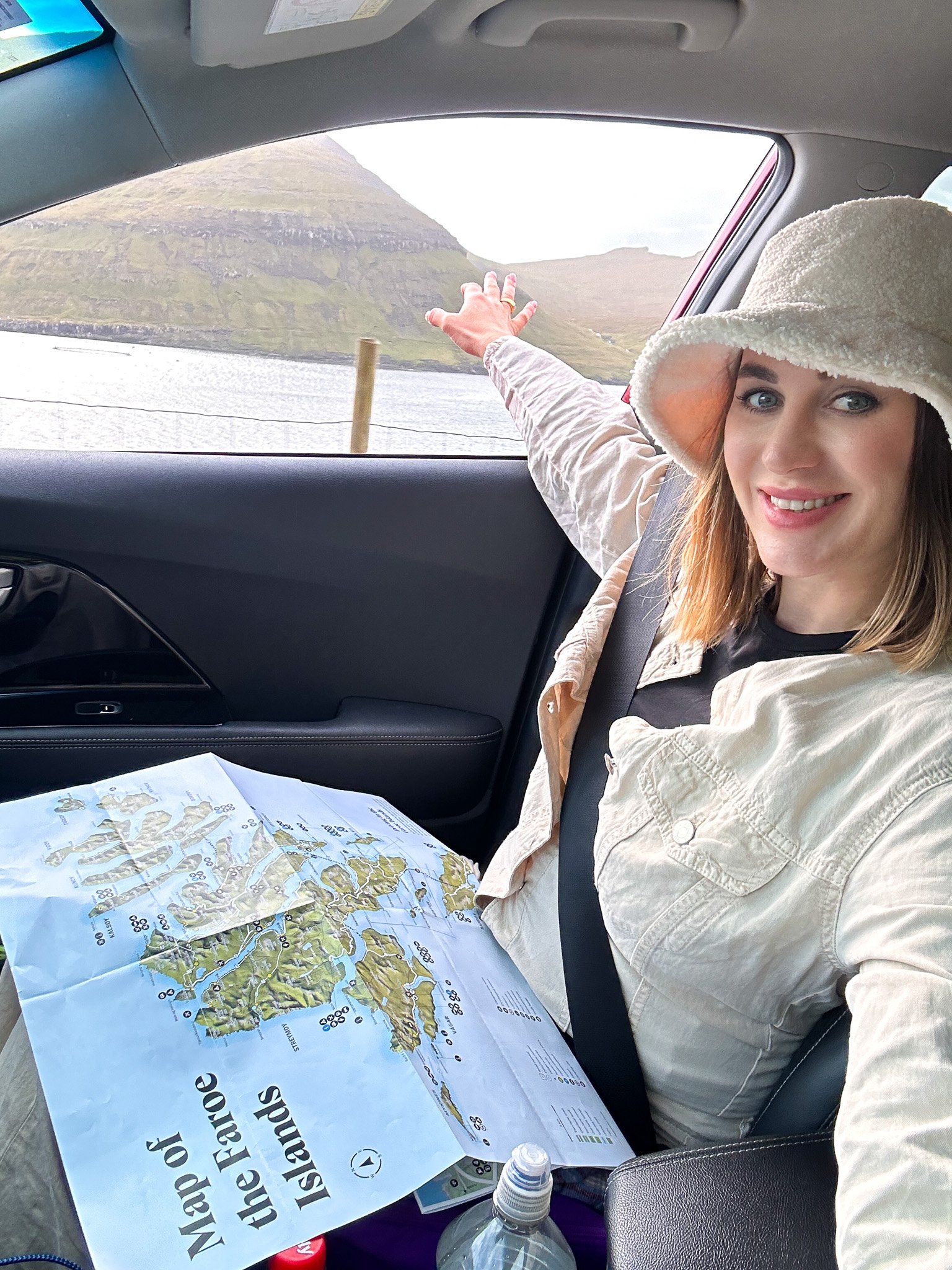
Driving in the Faroe Islands: Tips for Tourists & First Timers
Exploring the Faroe Islands by car? Brilliant choice! While the car rental costs might seem high, the stunning views and freedom are definitely worth it. Here’s what you need to know to make the most of your road trip in the Faroes.
In this “Driving in the Faroe Islands” guide, we’ll chat about renting a car (and all that insurance jazz), driving conditions, tolls, those famous underwater tunnels, passing places, and some good old driving etiquette.
Why Visit the Faroe Islands by Car?
You might wonder why driving in the Faroe Islands is the way to go. Despite being made up of 18 islands, the Faroe Islands are perfectly navigable by car. Most of the larger islands are linked by bridges or tunnels, while ferries service the others. This means that you can pack in more sights than you’d expect. Driving gives you the freedom to stop wherever you want, whenever you want, allowing you to fully experience the beauty of the islands.
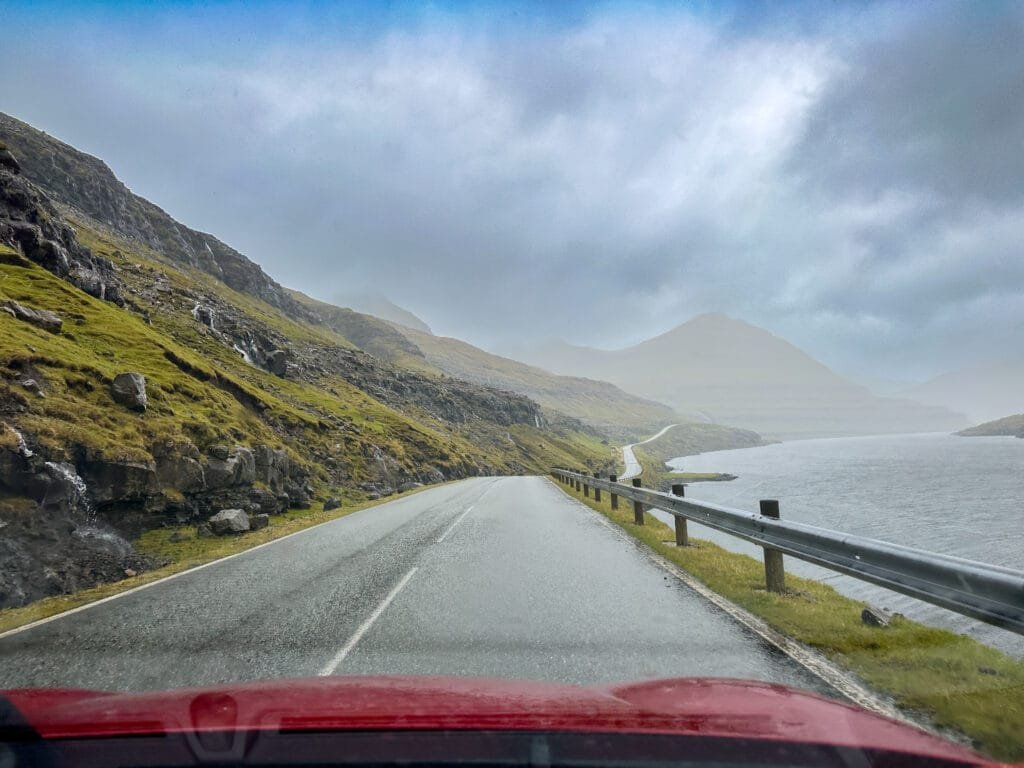
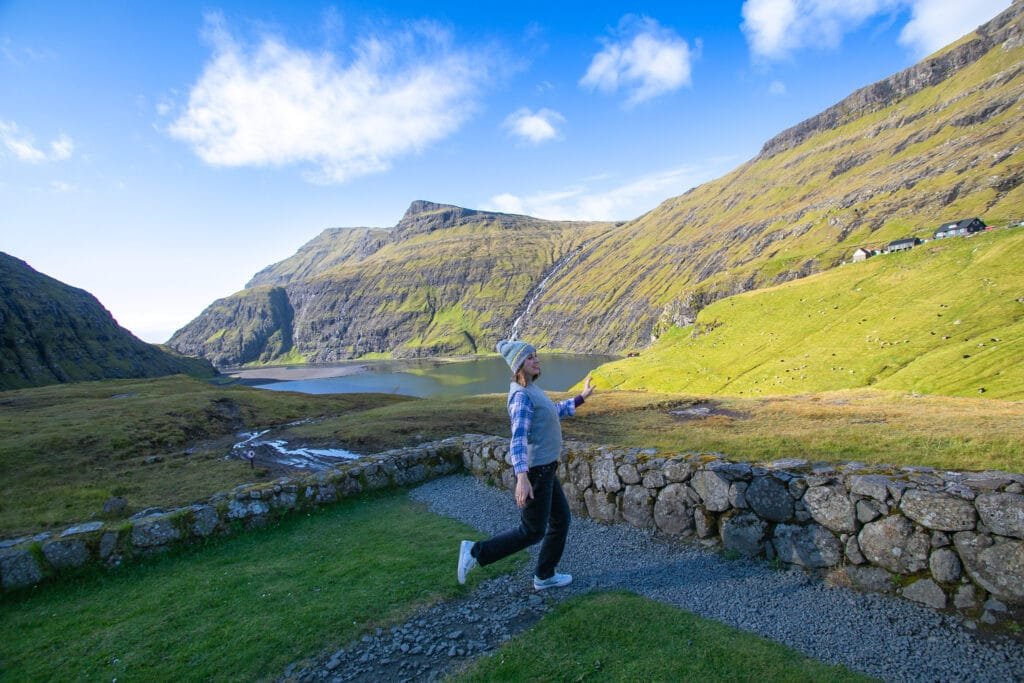
Driving in the Faroe Islands: Tips for Tourists & First Timers
Here are the essential tips and insights for making the most of your road trip around these stunning islands.
Car Rentals in the Faroe Islands
Prepare for Investment
If you’re used to snagging sweet deals on rental cars, brace yourself. Renting a car in the Faroe Islands is an investment. Prices are high due to the limited availability of cars and the high demand, especially during tourist seasons. It’s a classic case of supply and demand, with the added cost of getting vehicles to this remote location.
Insurance Insights
When it comes to insurance, opt for coverage offered by local rental agencies rather than third-party providers. Faroese agencies often require a hold of about $3,000 on your credit card if you’re using external insurance. This is a sneaky detail they don’t always advertise, so it’s worth considering.
Mileage Matters
Be aware that some rental agreements in the Faroes have a maximum mileage per day, typically set at 100 km. Exceeding this limit may incur extra fees. With the manageable distances and stunning scenery, this limit shouldn’t be a problem, but it’s something to keep in mind.
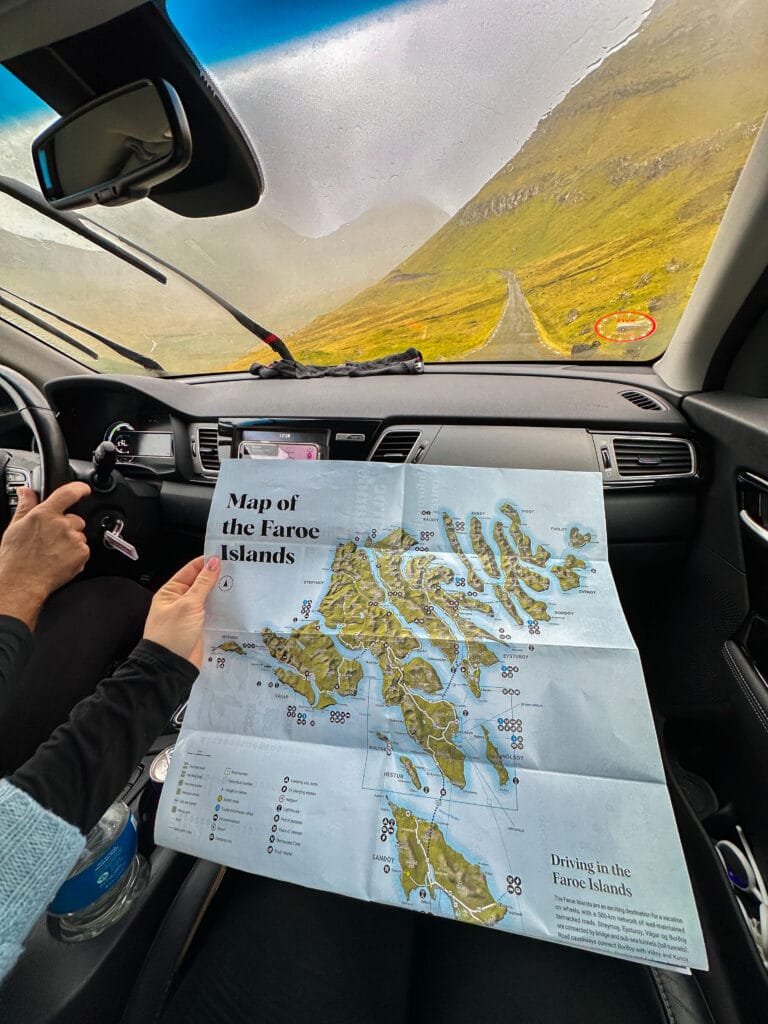
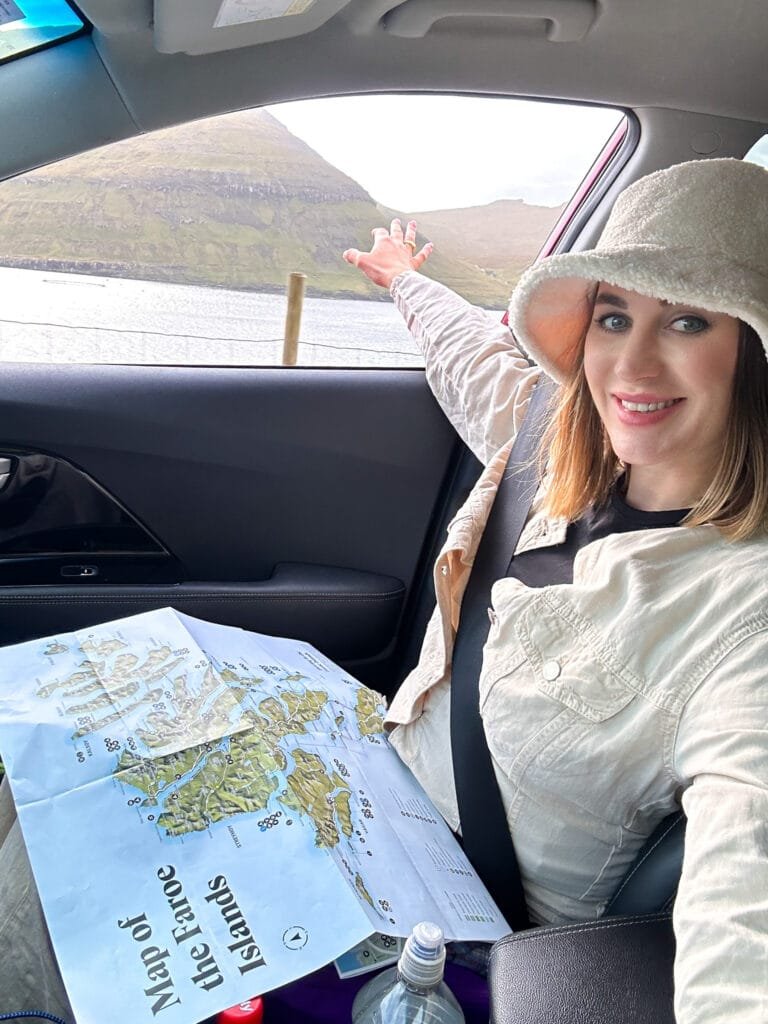
Short and Sweet Drives in The Faroes
Manageable Marvels
The beauty of these islands lies in their size. You won’t need to slog through five-hour drives to reach a village or viewpoint. Everything is just a stone’s throw away, allowing you to enjoy a full day of exploration with energy—and phone battery—to spare.
Perfect for a Mini-Road Trip
With short distances and endless beauty, it’s the perfect setup for a 3-4-day escapade. Plant yourself in Tórshavn, and launch trips to places like Bordnoy or Stremnoy. You’ll be checking off sights without the hassle of constantly packing up or switching accommodations.
A Leisurely Pace
The roads are open, the views are steady, and the pace is leisurely. It’s a road trip devoid of stress, letting you take in the sights and sounds without feeling rushed.
Having a stable base means less hassle with luggage and accommodation changes. You can enjoy a comfortable stay in one location while exploring different parts of the islands each day. Imagine waking up to a new adventure daily, yet returning to the same cozy place each night.
Watch Out for the Sheep
Speaking of sheep, let’s make one thing clear—they own the road. Drive carefully because these woolly wanderers aren’tchecking for traffic. Sheep outnumber humans here, making them a common sight on the roads. Picture it—you’recruising along, music on, then bam! Sheep.
In Old Norse, the Faroe Islands literally mean “Sheep Islands.” They’re everywhere, so expect a few road delays. Especially be extra cautious from late April to late June when baby lambs are around. They’re adorable but utterly clueless about traffic laws. Give them the right of way and all the time they need to move along.
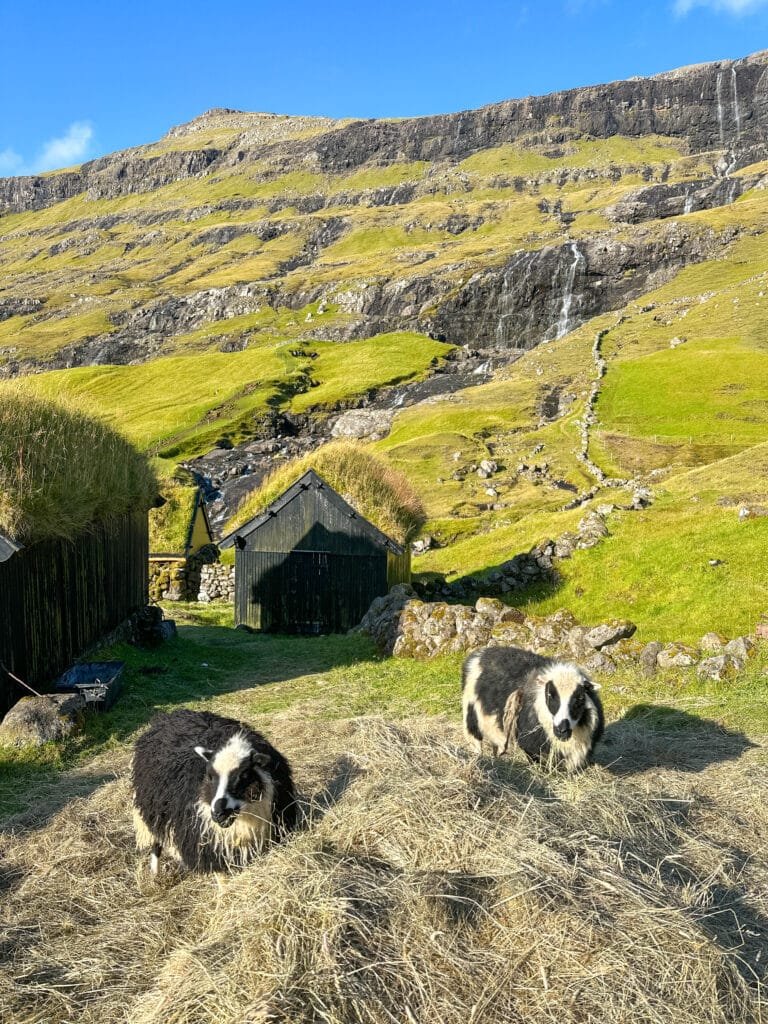
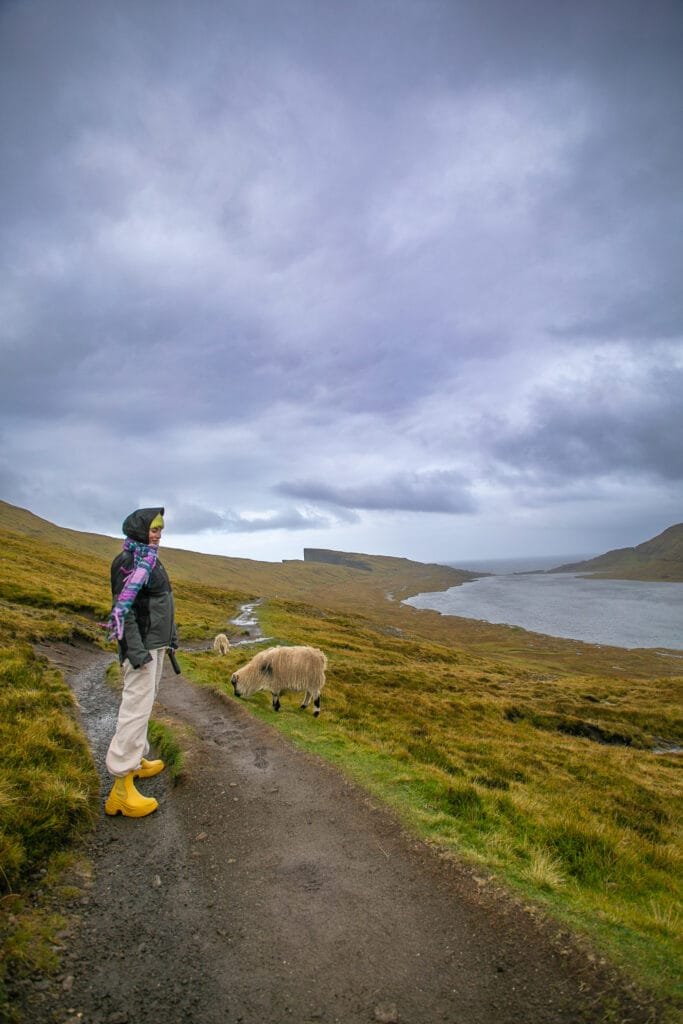
Exploring the Buttercup Routes of the Faroe Islands
Scenic Drives
The Faroe Islands feature several scenic routes known as ‘Buttercup routes,’ marked by a small green sign with a yellow flower. These routes offer breathtaking views that showcase the islands’ natural wonders.
Tourist Maps
Faroe Islands tourist maps highlight these Buttercup routes in green, making them easy to find. They guide you through some of the most picturesque landscapes, ensuring you don’t miss any must-see spots.
Must-See Spots
These routes are perfect for those wanting to experience the islands’ beauty at a leisurely pace. They take you off the beaten path and into areas where nature’s artistry is on full display.
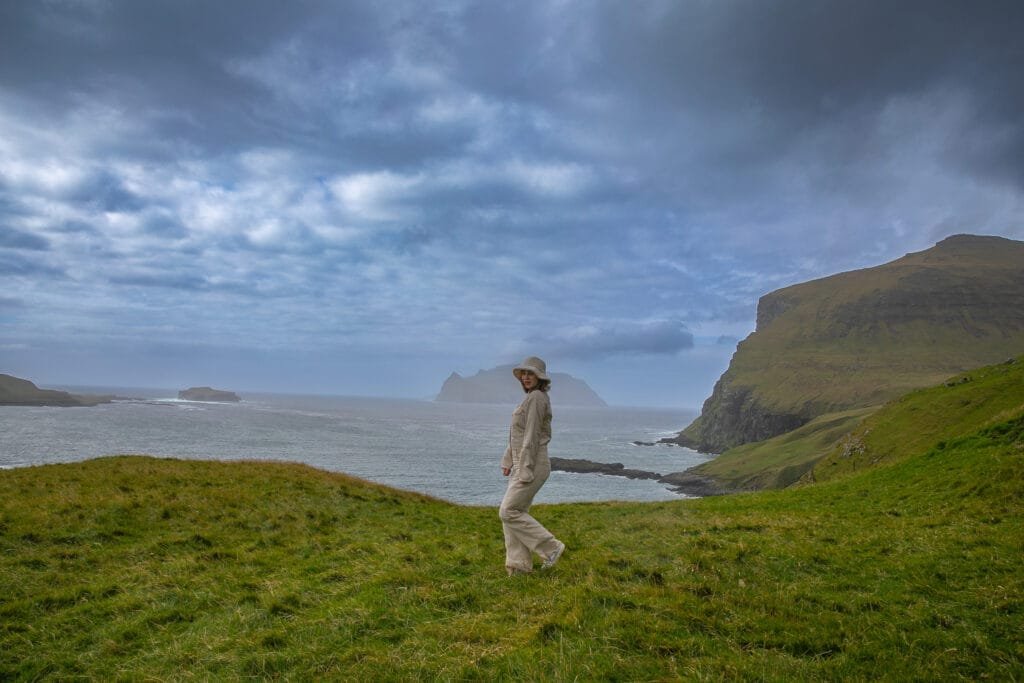
Navigating Passing Places in The Faroe Islands
Passing places refer to designated areas on roads, typically on narrow stretches, where you can safely overtake another vehicle by moving to the side of the road. This is similar to driving in Ireland or Scotland, where courtesy and understanding are key.
Key points about passing places in the Faroe Islands:
- Pull into them if they’re on your right-hand side to let the oncoming driver continue, and then pull out and continue your journey.
- Check for clear sightlines to ensure you have a good view of the road ahead before overtaking.
- Use designated passing places marked on narrow roads where it’s safe to pass.
Courtesy when driving on countryside roads is essential, so always give a little nod or wave to show appreciation to the driver who has pulled into a passing place to let you by.
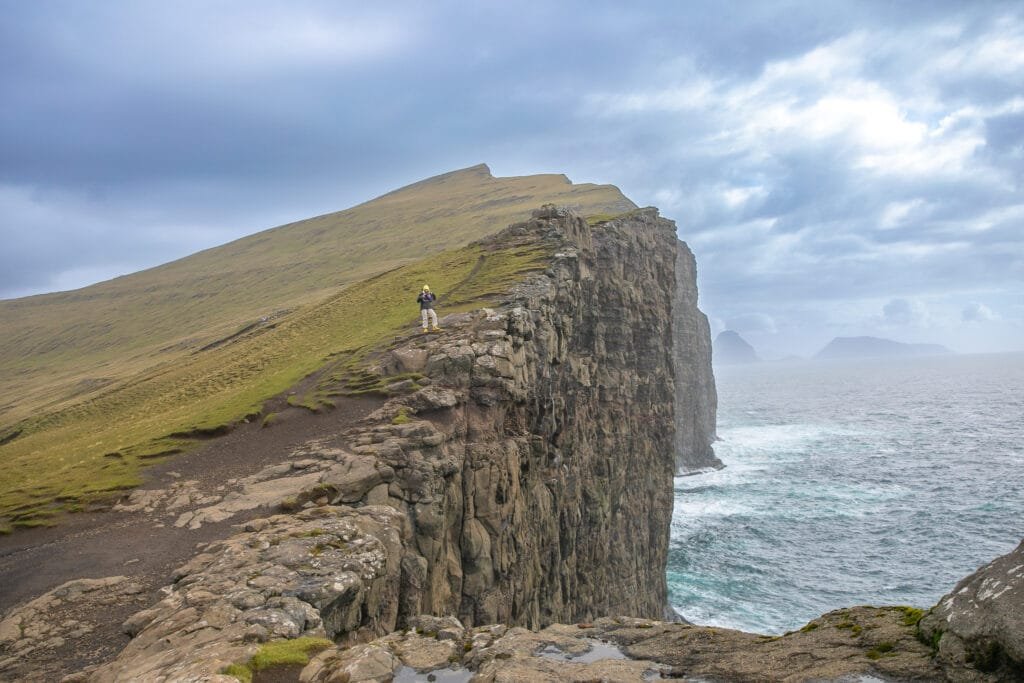
Underwater Tunnels of the Faroe Islands
Driving Underwater
The Faroe Islands’ underwater tunnels are engineering marvels that connect islands separated by straits and fjords. Driving beneath the ocean is a thrilling experience, and the tunnels are spacious, well-lit, and two-laned.
Unique Features
Some tunnels feature artistic lighting and are home to the world’s first underwater roundabout. It’s a surreal experience that adds a touch of magic to your road trip.
Safety Precautions
While the tunnels are safe, they’re also where most insurance claims occur. Keep your car lights on, practice safe driving, and exercise extra caution in these remarkable passages.
Planning Your Faroes Driving Itinerary
A lot of places are just meant to be seen by car, and the Faroe Islands should top these lists. Navigating and driving is easy, the jaw-dropping stops are plentiful, and there is so much to cover with more than manageable distances.
When planning your driving itinerary, consider the main attractions you want to see, but also leave room for exploration.Some of the best moments come from taking a detour or stopping at a spot that catches your eye. If you need ideas about the Faroe Islands itinerary, check it out here!
Conclusion
Eighteen islands scattered in the North Atlantic, connected by tunnels and ferries, with landscapes so stunning theypractically beg you to pull over every five minutes. Whether you’re team road trip or not, this is one destination best explored on four wheels.


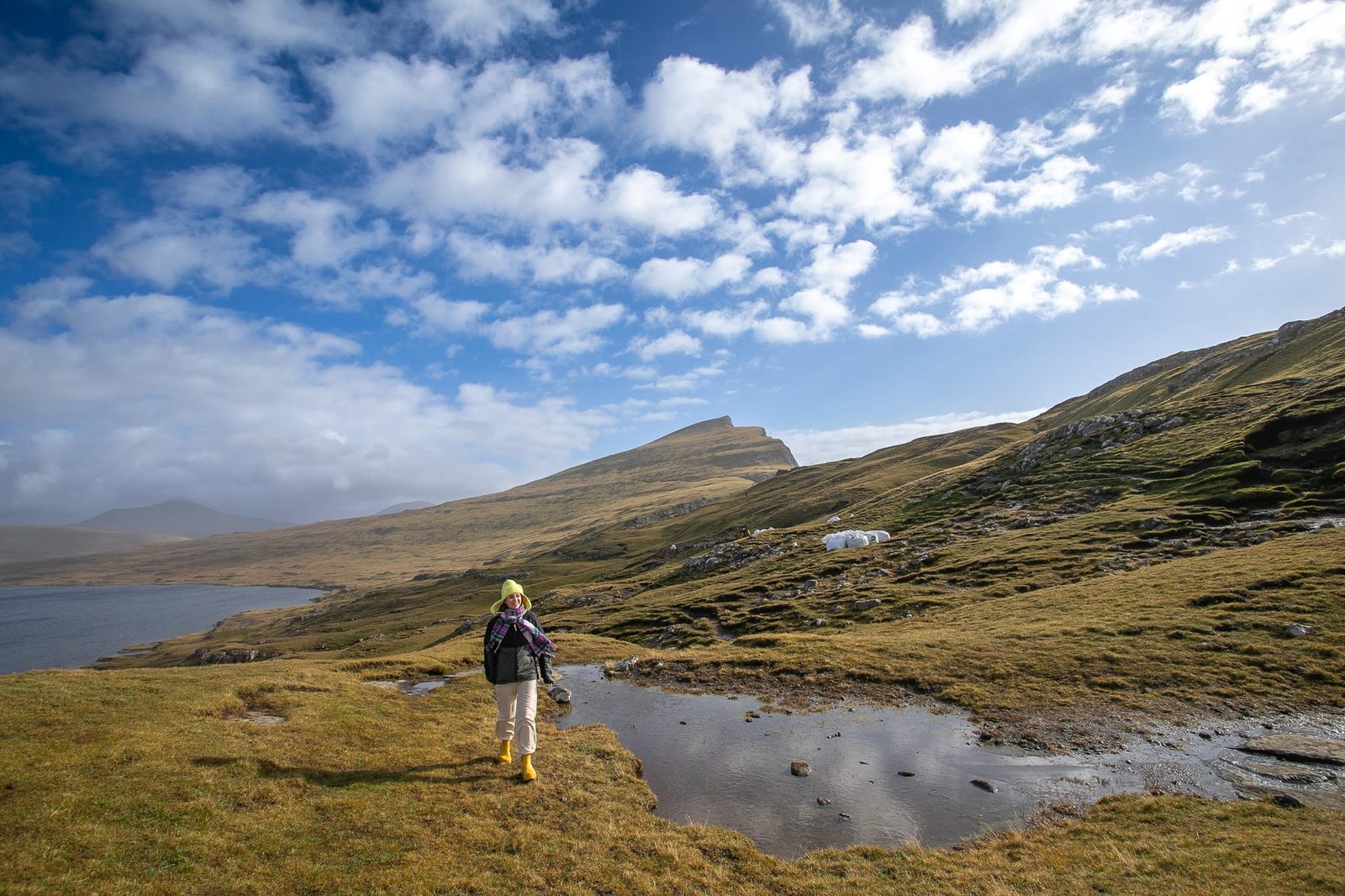
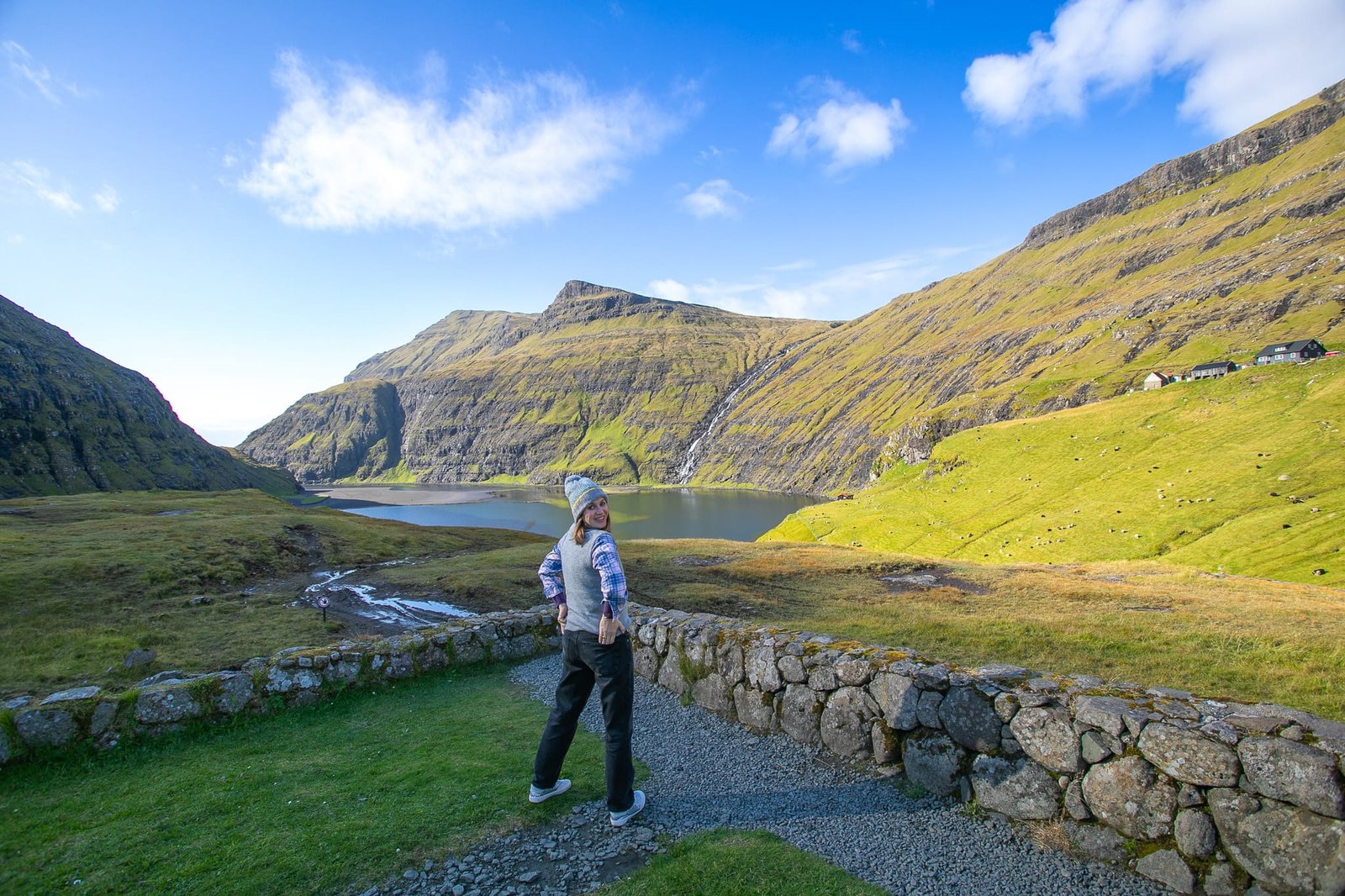
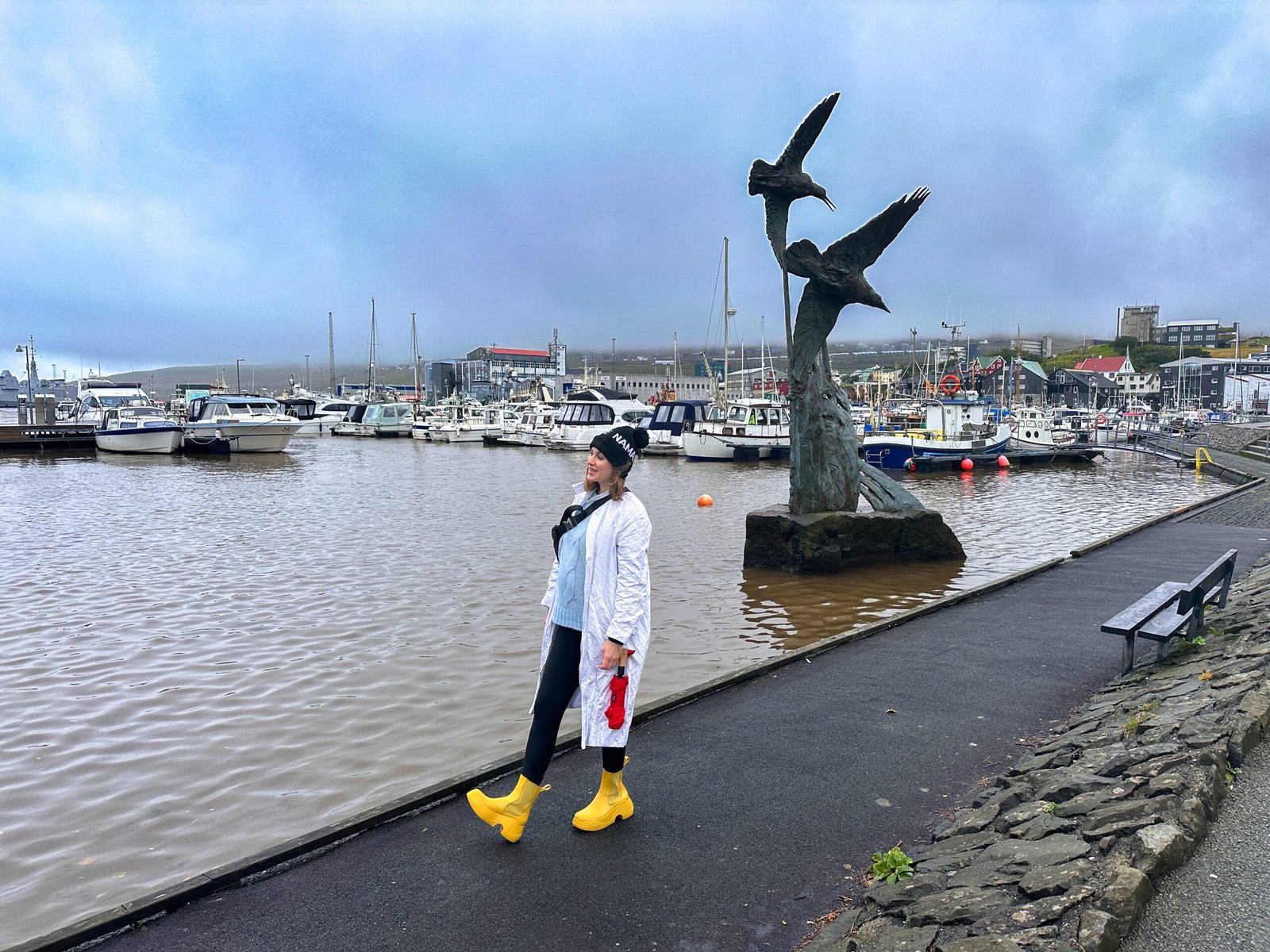
Leave a Reply